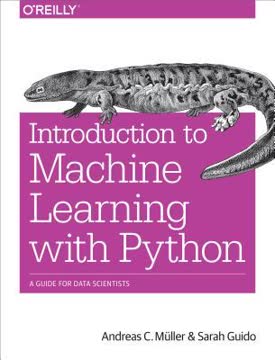Key Takeaways
1. Machine Learning Automates Decision-Making
The most successful kinds of machine learning algorithms are those that automate decision-making processes by generalizing from known examples.
Automating intelligence. Machine learning excels at automating decision-making by learning from examples. Instead of relying on hand-coded rules, machine learning algorithms generalize from data to make predictions on new, unseen data. This approach is particularly useful in situations where the logic required to make a decision is complex or unknown.
Supervised vs. Unsupervised. Machine learning tasks fall into two main categories: supervised learning, where the algorithm learns from labeled data, and unsupervised learning, where the algorithm explores unlabeled data to discover patterns. Supervised learning is well-suited for tasks like classification and regression, while unsupervised learning is useful for tasks like clustering and dimensionality reduction.
Data-driven insights. Machine learning algorithms extract knowledge from data, enabling them to identify trends, make predictions, and automate decision-making processes. This data-driven approach has revolutionized various fields, from medical diagnosis to financial forecasting.
2. Supervised Learning: Learning from Labeled Data
If your application can be formulated as a supervised learning problem, and you are able to create a dataset that includes the desired outcome, machine learning will likely be able to solve your problem.
Input/Output Pairs. Supervised learning algorithms learn from input/output pairs, where the input data is associated with a known output or label. The algorithm uses this labeled data to build a model that can predict the output for new, unseen inputs.
Classification and Regression. Supervised learning problems can be further divided into classification and regression tasks. Classification involves predicting a class label from a predefined list of possibilities, while regression involves predicting a continuous number.
Data Collection is Key. The success of supervised learning depends on the quality and quantity of the labeled data. Creating a dataset of inputs and outputs is often a laborious manual process, but it is essential for building an accurate and reliable model.
3. Model Complexity: Balancing Overfitting and Underfitting
Building a model that is too complex for the amount of information we have…is called overfitting.
The Generalization Goal. In supervised learning, the goal is to build a model that can generalize from the training data to new, unseen data. This means finding a model that is able to make accurate predictions on data that it has never seen before.
Overfitting vs. Underfitting. Overfitting occurs when a model is too complex and learns the noise in the training data, leading to poor generalization performance. Underfitting occurs when a model is too simple and cannot capture the underlying patterns in the data, resulting in poor performance on both the training and test sets.
Finding the Sweet Spot. The key to building a successful supervised learning model is to find the right balance between model complexity and generalization performance. This often involves adjusting the model's parameters and evaluating its performance on a validation set.
4. Linear Models: Simplicity and Power
For datasets with many features, linear models can be very powerful.
Linearity Defined. Linear models make predictions using a linear function of the input features. For regression, this means the prediction is a weighted sum of the features, while for classification, the decision boundary is a linear function of the input.
Types of Linear Models:
- Linear Regression: Minimizes the mean squared error between predictions and true values.
- Ridge Regression: Adds L2 regularization to prevent overfitting by shrinking coefficients.
- Lasso: Adds L1 regularization, which can lead to sparse models with feature selection.
- Logistic Regression: A classification algorithm that models the probability of belonging to a certain class.
Strengths and Weaknesses. Linear models are fast to train and predict, scale well to large datasets, and work well with sparse data. However, they can be too simple for complex relationships and are sensitive to feature scaling.
5. Naive Bayes: Fast and Scalable Classification
The reason that naive Bayes models are so efficient is that they learn parameters by looking at each feature individually and collect simple per-class statistics from each feature.
Independence Assumption. Naive Bayes classifiers are a family of classifiers based on Bayes' theorem, assuming independence between features. This assumption simplifies the learning process and makes them very fast to train.
Types of Naive Bayes Classifiers:
- GaussianNB: Assumes continuous data follows a Gaussian distribution.
- BernoulliNB: Assumes binary data.
- MultinomialNB: Assumes count data.
Strengths and Weaknesses. Naive Bayes models are very fast to train and predict, work well with high-dimensional sparse data, and are relatively robust to parameters. However, their strong independence assumption can limit their accuracy compared to more complex models.
6. Decision Trees: Interpretable Hierarchies
Learning a decision tree means learning the sequence of if/else questions that gets us to the true answer most quickly.
Hierarchical Decisions. Decision trees learn a hierarchy of if/else questions to make predictions. Each question splits the data based on a feature, and the process is repeated until a decision is reached.
Controlling Complexity. To prevent overfitting, decision trees are often pre-pruned by limiting their maximum depth, the maximum number of leaves, or requiring a minimum number of points in a node to keep splitting it.
Strengths and Weaknesses. Decision trees are easy to visualize and understand, don't require scaling of the data, and can handle a mix of binary and continuous features. However, they tend to overfit and provide poor generalization performance.
7. Ensemble Methods: Combining Multiple Models
Ensembles are methods that combine multiple machine learning models to create more powerful models.
Power in Numbers. Ensemble methods combine multiple machine learning models to create more powerful models. By aggregating the predictions of multiple models, ensemble methods can reduce variance and improve generalization performance.
Random Forests. Random forests are a collection of decision trees, where each tree is trained on a slightly different subset of the data and features. The predictions of the trees are then averaged to make a final prediction.
Gradient Boosted Decision Trees. Gradient boosted decision trees build trees in a serial manner, where each tree tries to correct the mistakes of the previous one. Gradient boosting often uses very shallow trees and strong pre-pruning.
8. Kernelized SVMs: Expanding Feature Spaces
The lesson here is that adding nonlinear features to the representation of our data can make linear models much more powerful.
The Kernel Trick. Kernelized support vector machines (SVMs) use a mathematical trick called the kernel trick to learn a classifier in a higher-dimensional space without explicitly computing the new representation. This allows for more complex models that are not defined simply by hyperplanes in the input space.
Types of Kernels:
- Polynomial Kernel: Computes all possible polynomials up to a certain degree of the original features.
- Radial Basis Function (RBF) Kernel: Considers all possible polynomials of all degrees, but the importance of the features decreases for higher degrees.
Strengths and Weaknesses. Kernelized SVMs are powerful models that perform well on a variety of datasets. They allow for complex decision boundaries, even if the data has only a few features. However, they don't scale very well with the number of samples and require careful preprocessing of the data and tuning of the parameters.
9. Neural Networks: Deep Learning Architectures
Neural networks have reemerged as state-of-the-art models in many applications of machine learning.
Multilayer Perceptrons (MLPs). Neural networks, also known as multilayer perceptrons (MLPs), are generalizations of linear models that perform multiple stages of processing to come to a decision. MLPs consist of layers of interconnected nodes, where each connection has a weight associated with it.
Activation Functions. After computing a weighted sum for each hidden unit, a nonlinear function is applied to the result. Common nonlinear functions include the rectifying nonlinearity (ReLU) and the tangens hyperbolicus (tanh).
Strengths and Weaknesses. Neural networks can capture information contained in large amounts of data and build incredibly complex models. However, they often take a long time to train, require careful preprocessing of the data, and are sensitive to the choice of parameters.
10. Evaluating Model Uncertainty
Another useful part of the scikit-learn interface…is the ability of classifiers to provide uncertainty estimates of predictions.
Beyond Point Predictions. Classifiers can provide uncertainty estimates of predictions, indicating how confident the model is in its classification. This information is valuable in applications where the consequences of different types of errors vary.
Methods for Uncertainty Estimation:
- decision_function: Returns a score for each sample, indicating the model's confidence in its prediction.
- predict_proba: Returns a probability for each class, representing the likelihood of the sample belonging to that class.
Calibration. A calibrated model is a model that provides an accurate measure of its uncertainty. In a calibrated model, a prediction made with 70% certainty would be correct 70% of the time.
11. Feature Engineering: Representing Data Effectively
The question of how to represent your data best for a particular application is known as feature engineering, and it is one of the main tasks of data scientists and machine learning practitioners trying to solve real-world problems.
The Art of Representation. Feature engineering is the process of selecting, transforming, and creating features that are most informative for a particular machine learning task. The way data is represented can have a significant impact on the performance of machine learning models.
Techniques for Feature Engineering:
- One-Hot Encoding: Converting categorical variables into numerical representations.
- Binning: Discretizing continuous features into bins.
- Polynomial Features: Adding polynomial terms and interaction features to capture nonlinear relationships.
- Univariate Nonlinear Transformations: Applying mathematical functions like log, exp, or sin to adjust the scale and distribution of features.
Expert Knowledge. Feature engineering is often an important place to use expert knowledge for a particular application. Domain experts can help in identifying useful features that are much more informative than the initial representation of the data.
Last updated:
Review Summary
Introduction to Machine Learning with Python is highly recommended for beginners in machine learning, offering a practical approach using scikit-learn. Readers appreciate its clear explanations of algorithms, emphasis on code examples, and insights into parameter tuning. The book is praised for its accessibility, avoiding complex mathematics while providing a solid foundation. Some criticisms include its reliance on a custom library for examples and lack of depth in certain areas. Overall, it's considered an excellent starting point for those with basic Python knowledge wanting to explore machine learning concepts.
Similar Books

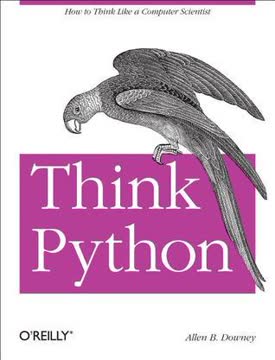
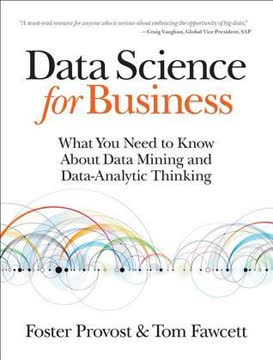

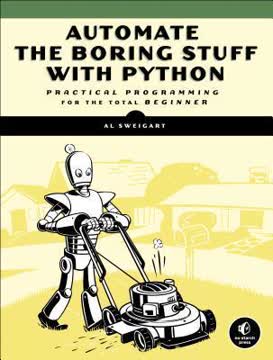
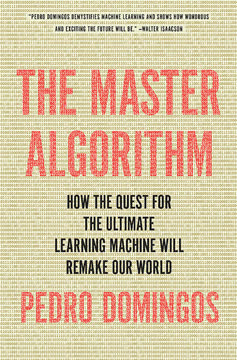

Download PDF
Download EPUB
.epub digital book format is ideal for reading ebooks on phones, tablets, and e-readers.
